How to Spot fake Gibson Guitars
Founded by Orville Gibson in 1902 in Kalamazoo, Michigan, the Gibson Mandolin-Guitar Mfg. Co. initially focused on crafting mandolin-family instruments. Over time, their repertoire expanded to include flattop acoustic guitars, marking a notable shift. By the 1930s, Gibson had also ventured into creating one of the earliest commercially available hollow-body electric guitars, a pioneering move that gained popularity through musicians like Charlie Christian.
In contemporary times, the market has seen the emergence of counterfeit versions of these sought-after guitars. To help you distinguish the authentic from the imitation, here’s a checklist to consider:
Step 1: Pricing Alert

Be cautious if a Gibson Les Paul is being offered at an unusually low price, especially from sellers based in China. Remember, a deal that seems too good to be true might indeed be a fake.
Step 2: Scrutinize the Headstock


Authentic Gibsons feature an inlay of Mother of Pearl for the “Gibson” logo. Watch out for painted imitations; a genuine Gibson has a distinct headstock appearance.
Step 3: Headstock Details


Examine the headstock closely. Authentic ones have the distinctive Mother of Pearl “Gibson” or crown inlay. If it’s missing or looks off, exercise caution, particularly when buying online.
Step 4: Serial Number Check
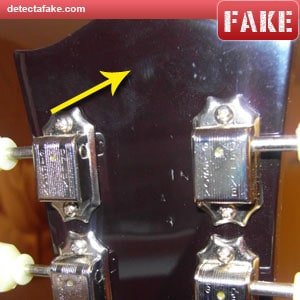
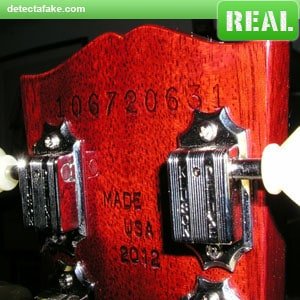
Check the serial number on the back of the headstock. Modern Gibson guitars typically have nine-digit serial numbers, while older models may have shorter ones. Ensure it includes “Made in USA” underneath. Irregularities in engraving or ink depth might indicate a fake.
Step 5: Truss Rod Cover
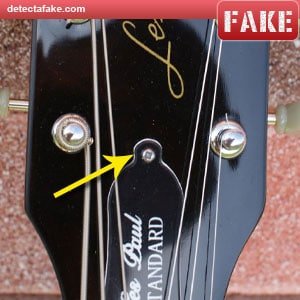

Authentic truss rod covers on Gibsons have minimal space between the top screw and the cover’s outer edge. Counterfeits often have more space and a less refined cut.
Step 6: Bridge Inspection
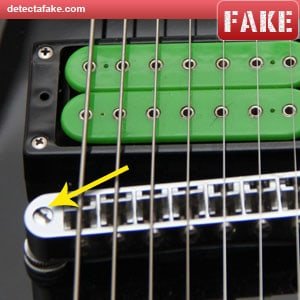
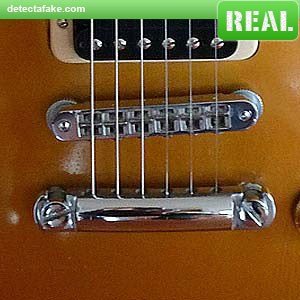
Authentic Gibson bridges are solid, without a screw slot in the recess. If you spot a screw slot, exercise caution—it could be a fake.
Step 7: Binding on the Headstock


Real Gibsons have thin binding on the headstock. Fakes may have binding taking up more than half of the headstock thickness. Pay attention to these subtle differences.
Step 8: Fret Examination
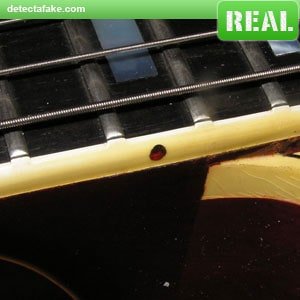

Inspect the frets, ensuring they extend all the way to the binding. Genuine Gibsons have the binding riding up slightly on the fret, a detail often missed by counterfeiters.
Step 9: Scarf Joint Check


Authentic Gibson guitars typically don’t have scarf joints. Confirm this detail to further authenticate your instrument.
Utilize resources like The Guitar Dater Project to verify the serial number, providing insights into your guitar’s birth date and manufacturing plant. Stay vigilant, and you’ll be better equipped to identify an authentic Gibson from its counterfeit counterpart.
